News
How to count penguins
RSPB penguinologist Antje Steinfurth heads to some remote islands to count endangered Northern Rockhoppers.
Cranes were once widespread and probably very common across the UK, but they were lost as a breeding species in the Elizabethan Era – around 400 years ago.

Cranes were once widespread and probably very common across the UK, but they were lost as a breeding species in the Elizabethan Era – around 400 years ago.
There are numerous villages and places where the pre-fix of the name links to the presence of cranes and in the UK and there are more places named after cranes than any other bird species.
In north-east England places such as Tranmere would translate to ‘crane-marsh’ with the pre-fix ‘Tran’ of Viking origin, and remaining in the current Swedish word for crane ‘Trana’.
In Anglo-Saxon areas, and just down the road from the Somerset Levels and Moors where The Great Crane Project took place, is a village called ‘Cranmoor’. The pre-fix cran and the moor translate as ‘crane moor’ with ‘moor’ being synonymous in Somerset with a mire, mere or marsh.
Cranes may have once held cultural significance similar to that in Asia, where they are revered as symbols of peace, happiness, and longevity. Despite their revered status, it is believed that their decline and loss can be attributed to a combination of hunting for food and the widespread drainage of wetlands for agricultural purposes. They were certainly popular on mediaeval menus and feasts – King Henry III and his court ate an incredible 115 as part of a Christmas meal in 1251 AD.
Thankfully, a natural recolonization began in the Norfolk Broads in the east of the UK, with a pair successfully breeding in the early 1980s. These birds are believed to be of continental European origin, but no evidence of their origin is available for analysis. Breeding success was sporadic through the 80s and 90s but the population slowly increased, and the UK population had reached 5 breeding pairs by 2000.
The population had also spread outside of the Norfolk Broads, with birds breeding on the Humberhead Peatlands in Yorkshire the early 2000s and by the end of this decade also within the Fens of Suffolk (at RSPB Lakenheath and other sites) in Cambridgeshire, and also on peat bogs in Aberdeenshire, Scotland.
Graph 1. UK crane breeding population (pairs) and breeding success 1977 - 2000

In the early 2000s two conservation organisations, The Wildfowl & Wetlands Trust (WWT) and the Pensthorpe Conservation Trust got together to discuss the possibilities of supplementing the UK population with hand-reared, re-introduced cranes. RSPB joined this partnership and a feasibility study for reintroduction was carried out in 2006.
The Somerset Levels and Moors, in the South West of the UK were selected as the most likely site for a successful release and in 2009, with funding from Viridor Credits Environmental Company, and in close collaboration with Kranichschutz Deutschland and conservationists working within the Schorfheide-Chorin Biosphere Reserve in Brandenburg the ‘Great Crane Project’ began.
Over the five years of 2010-2014 eggs were collected under licence from Brandenburg State Authority and transported back to the WWT rearing facility at Slimbridge in Gloucestershire, England where they were hatched and hand-reared, using the puppet rearing technique, developed for the rearing of Whooping Cranes (Grus americana) in the USA.
At around 10 weeks old the young Cranes were fitted with colour rings and radio tags and then transported in specially designed transport crates to their release site at the RSPB West Sedgemoor Reserve on the Somerset Levels and Moors. Once on site, they were housed in an aviary for a further two weeks before a ‘soft-release’ into a 2ha fenced enclosure, where the birds were returned each evening for their safety.
Over the five years of the project – a total of 137 eggs were collected with 94 of these successfully hatched, reared and released onto the Somerset Levels and Moors.
Table 1. Number of eggs collected, imported, hatched and chicks released
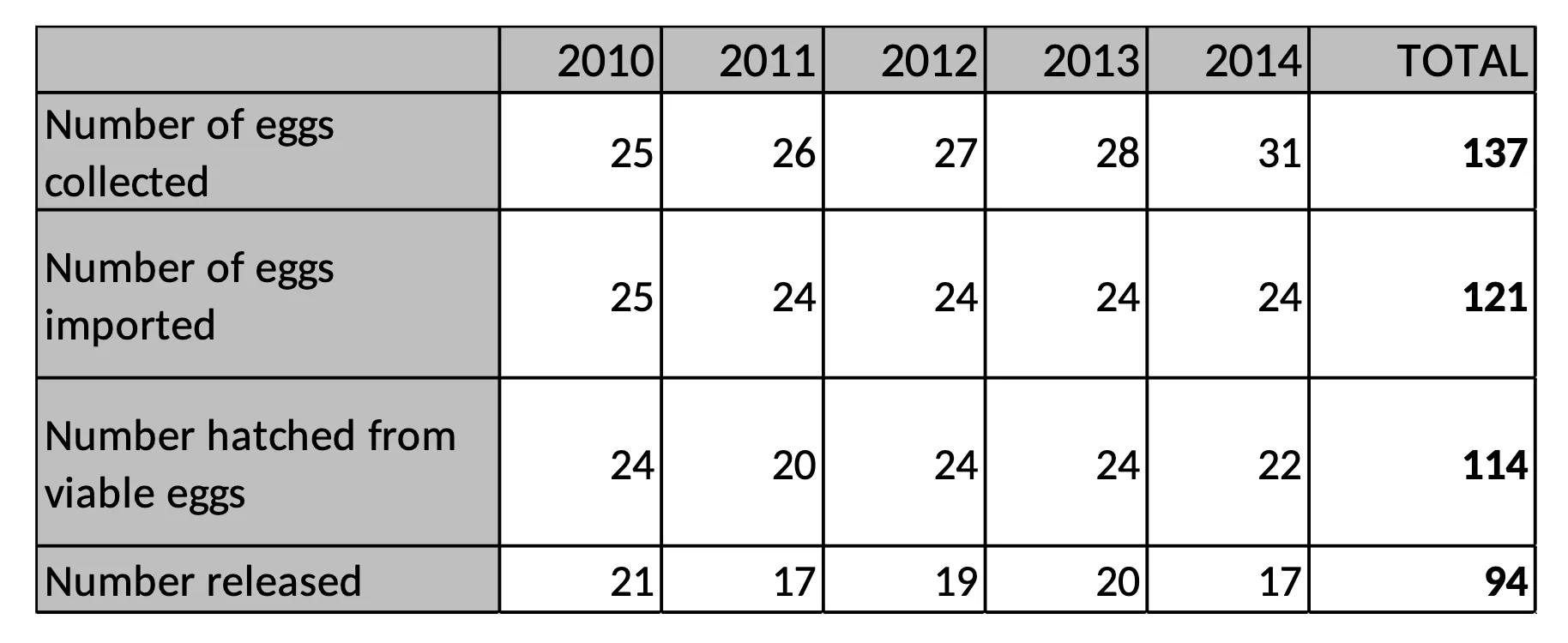
The 94 released Cranes were very closely monitored through a combination of GPS and Radio tracking and colour ring reading. Most birds remained close to the release area following release, but some made flights several hundred miles to the east and north. Some subsequently returned and others disappeared. One, that was behaving oddly was taken into captivity and was later found to have had issues with eyesight due to cataracts. This explains the figure of ‘93’ (rather than 94) in subsequent tables. A small group have settled in the area around the WWT Slimbridge site where they were hand-reared.
Survival rates have been much higher than anticipated but there have been some losses through disease, collision injury, and predation. The majority of losses, however, have to be put down to ‘unknown’ as the birds have simply disappeared and have not been re-located.
Table 2. Percentage of release cohorts surviving (at end of 2022)
.png)
The Great Crane Project also funded a community engagement programme that saw local businesses taking on, or ‘championing’ individual birds, and a large number of local schools naming and championing birds too. This programme was really crucial to ensure the long-term sense of ownership of the birds in the local environment. The Cranes are very much seen as belonging to Somerset, and the Crane as an emblem or icon is starting to pop up on logos and in local marketing.
A partnership with a county-based arts charity - Somerset Art Works – saw a whole programme of arts engagement activities undertaken – forging an emotional connection with the Cranes and their wetland environments, that has had a long-reaching impact. This culminated with Artist Sarah Butterworth being commissioned to lead an exciting celebratory project working with school and community groups through the Autumn of 2014. “A Celebration of Cranes” marked 5 years of the RSPB and SAW’s creative partnership, culminating with a procession of illuminated lanterns, Crane puppets, dance and live music.

The Great Crane Project cost around £1.2M to deliver, with 100% funding from Viridor Credits Environmental Company using ‘landfill tax’ money, derived from waste management.
Over half of the project costs (£720K) were used to support staff across the six years of the project to manage the project, hand-rear, care-for, release and then monitor the birds and to deliver a landowner and community engagement and education programme on the Somerset Levels and Moors.
The build of the bio-secure rearing facility was a core cost taking around 18% of the overall budget.
Graph 2. Great Crane Project budget breakdown
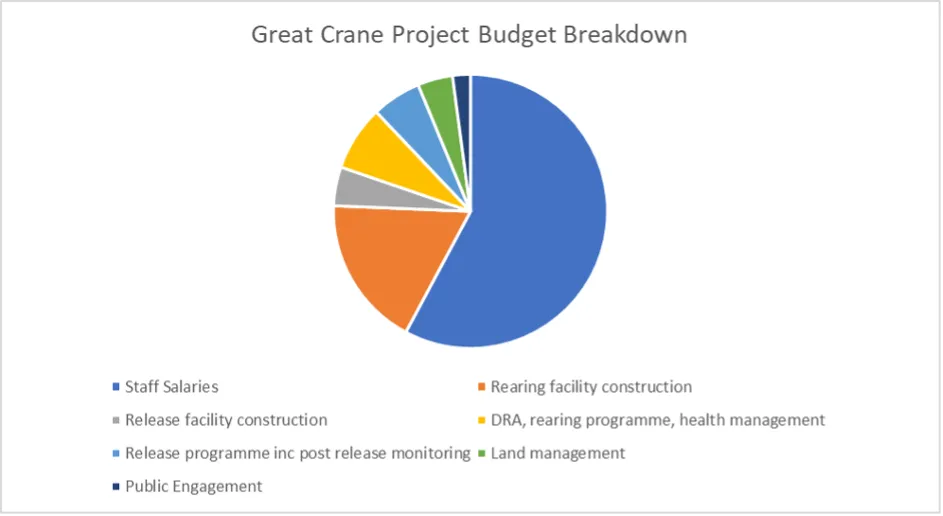
Other significant costs included a comprehensive disease risk assessment, the non-staff costs of hand-rearing and health management (£95K); costs associated with the release and post release monitoring (£72K); the construction and upkeep of the temporary release facility on RSPB West Sedgemoor (£57K); and land management across the Somerset Levels and Moors (£51K), creating a number of new wetland areas such as the one below to provide suitable, safe breeding locations. These habitat enhancements were carried both on RSPB nature reserve and private land, with a number of local farmers and landowners keen to support the long term return of Cranes to the local environment.
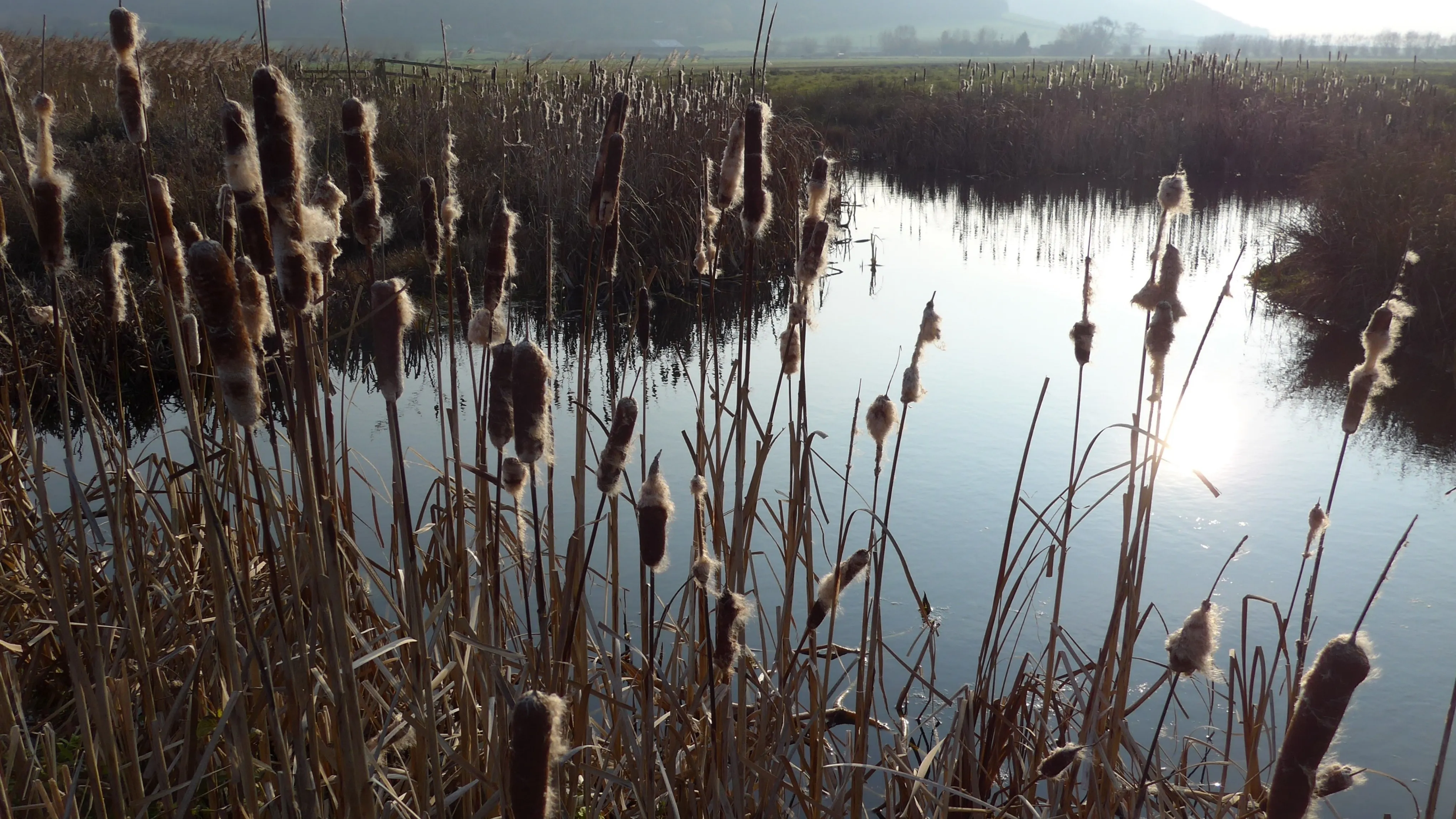
First successful breeding from the released population took place in 2015. Breeding success was initially lower than that found in the wider UK population but 2021 and 2022 have been particularly good years and breeding productivity is now in a similar range to that found across the UK. The slow start may have been a function of the birds being both young and hand-reared.
Table 3. Productivity of release project birds
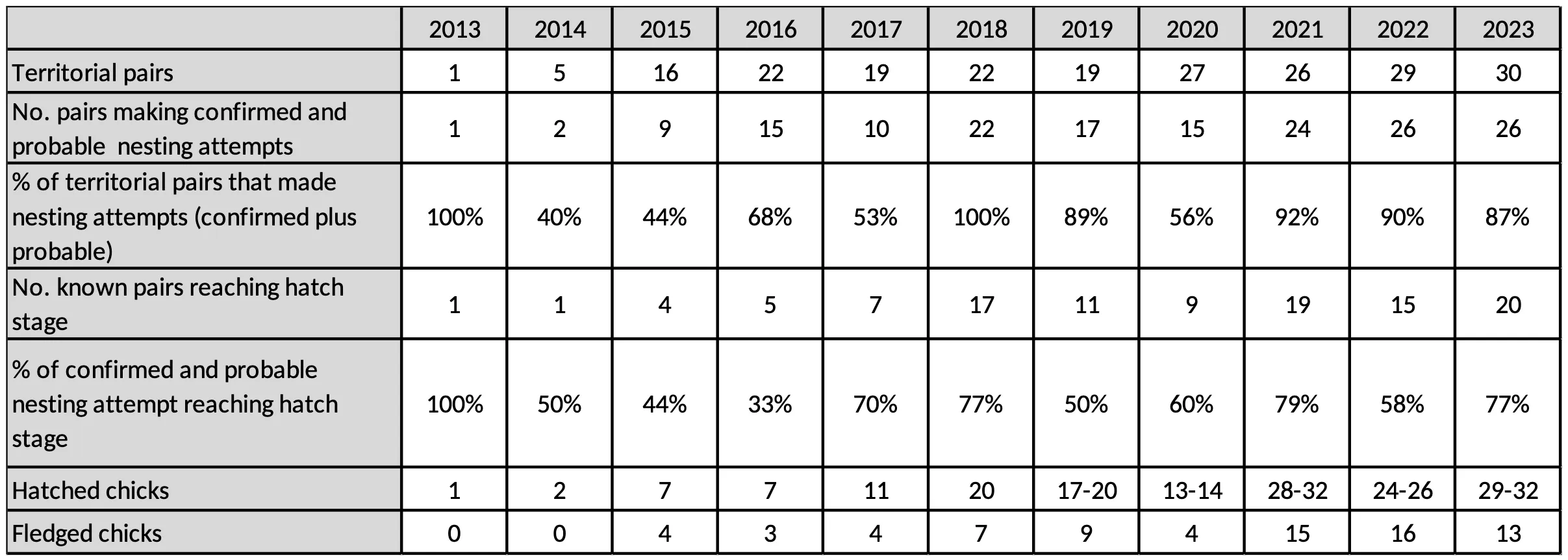
Graph 3. Productivity of release project birds
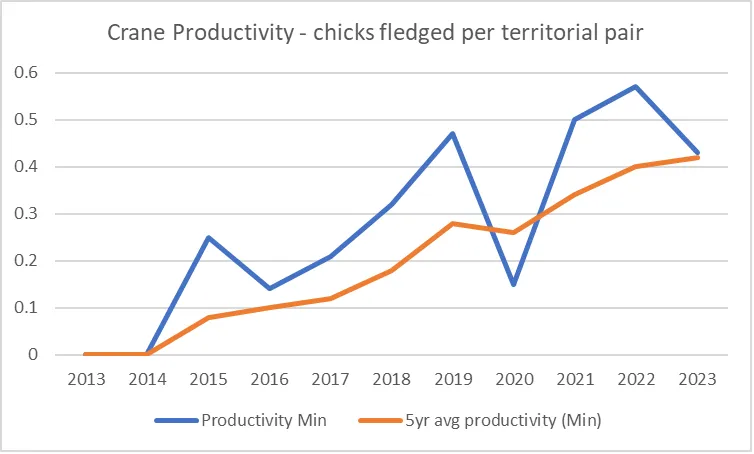
The recruitment of fledged chicks into overall population from the reintroduction has seen the population steadily increase and the total flock population is now (October 2023) around 110 birds.
Well over 50% of this population made up of these 2nd and 3rd generation birds. It is not yet possible to establish if they are more successful than the original release population as breeding numbers are still low. There are also a number of pairs made up of hand-reared release birds with unringed, presumed 2nd generation Cranes as a partner.
The table and graph below show how this flock make-up has changed over time. Our monitoring enables us to establish the total flock population only at the very end of the calendar year, so the data below is based on the flock size at the end of 2022. However, with 14 new recruits this year and only 4 known deaths / losses of birds (so far) the population appears to be continuing its steady increase.
Table 3 – Population composition measured at end 2014 - end 2022
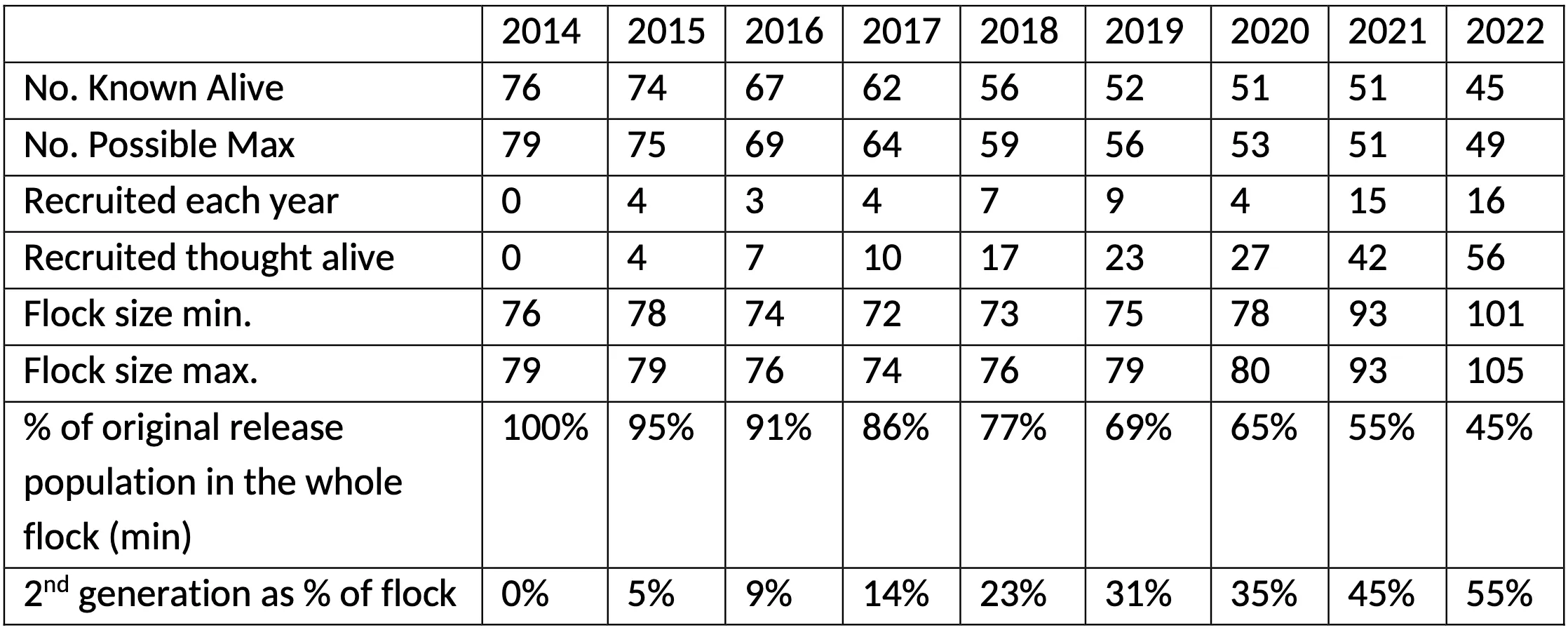
Graph 4. Re-introduced Crane population 2010-2022
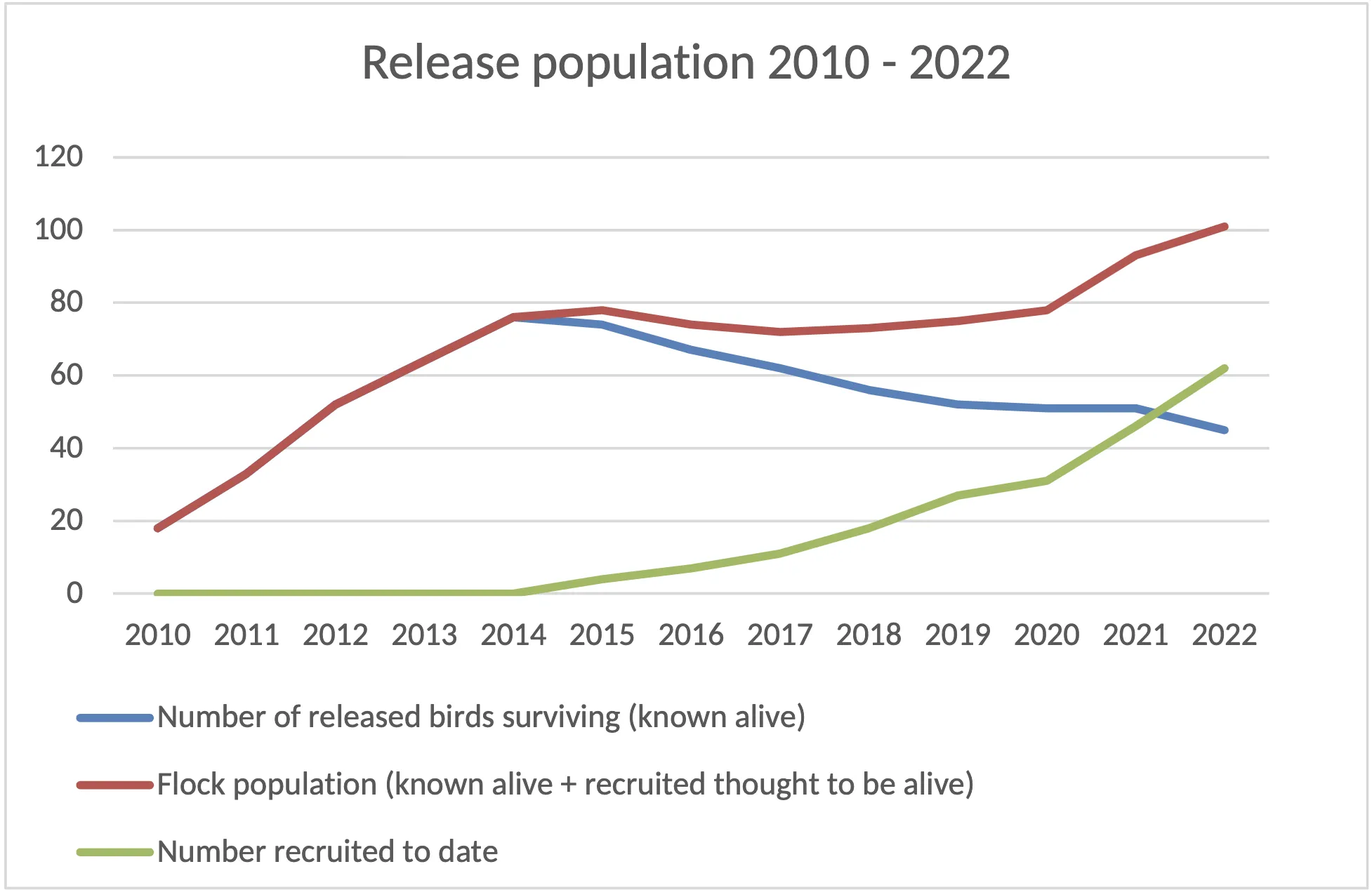
Breeding has not been confined to the Somerset Levels and Moors, although this is where most of the reintroduced population is found. 2023 recorded 22 pairs in Somerset (the highest number to date) 5 in Gloucestershire, 1 in Oxfordshire and 1 each in Wiltshire and Dorset. In previous years birds from the release project have also bred in South Wales and Cambridgeshire.
Nearly all the monitoring is undertaken by a dedicated team of local volunteers, part of the RSPB’s Species Volunteer Network. Breeding pairs and wintering flocks are watched from distant vantage points with telescopes to prevent disturbance, with colour ring information, and chick numbers being collated. All the release birds were colour ringed with a three colour combination on both legs. The left leg is the same on all birds – a code of Black Blue Black, signifying that the birds have been ringed in the UK. This code is agreed with the European Crane Working Group, with each country undertaking colour ringing having its own left leg code. The right leg of the crane has a three colour code unique to that individual. As can be seen in the list below.
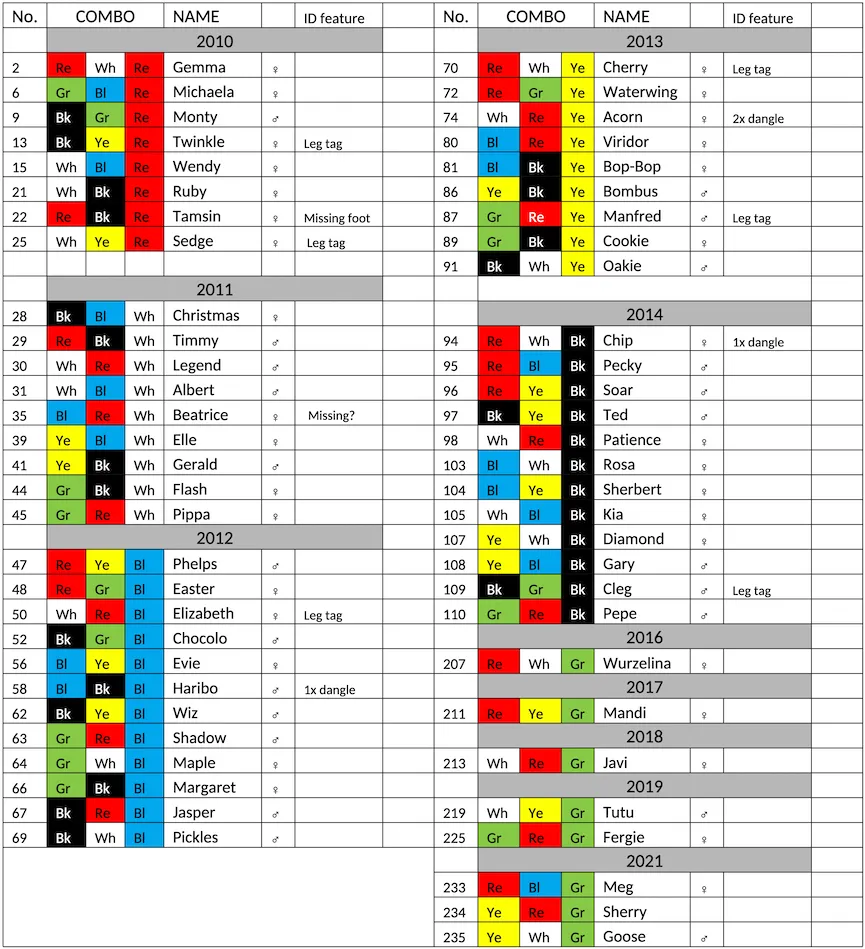
A small team has also been catching and colour ringing some of the chicks produced in the wild from the release project birds in order to establish the long term success of the 2nd generation and the project itself. They are not easy to catch, and numbers of colour ringed 2nd generation birds are low. All are ringed with a green ring at the bottom of the 3 colour combination.

The re-introduction has contributed significantly to the recovery of cranes in the UK. Below is a graph showing the number of pairs of Cranes breeding in the UK. At its peak (2018) the re-introduced breeding population made up 50% of the UK’s breeding population.
Graph 4. UK breeding Crane pairs since 2015 and contribution of re-introduction

Due to effective conservation action, increases in suitable habitat, and particularly the expansion of the population in the East Anglian Fens and Aberdeenshire, there has been a large improvement in the breeding success of the native population. These population increases, at the same time as the re-introduction in the South West of the UK have driven the dramatic upturn in number of fledged chicks in the UK since 2000 clearly seen in the graph below:
Graph 5. Crane fledging in the UK 1977-2022

With their rapidly expanding population, cranes are doing well in the UK but there is a pressing need for more, and larger wetlands to support this growing population. Current government policy (eg the 2021 England Peat Action Plan) aims to re-wet and restore many peatland areas such as are found across the Somerset Levels, the Fens of East Anglia and also in bogs across much of the UK’s upland habitat. This drive, aligned with significant conservation effort to create wetland habitats to adapt to and mitigate for the impacts of climate change, and to help restore nature across the UK should mean a relatively secure future for this iconic species across the UK.
RSPB are immensely grateful to Viridor Credits and the Ernest Kleinwort Trust for funding the project; to the other Great Crane Project partners PCT and WWT; to Beate Blahy and Eberhard Henne of Vielfalt Biosphere in Brandenburg State, Germany; to Kranichschutz Deutschland; to Somerset Art Works and the artists who collaborated with the project; to all the volunteers worked on the project and continue to monitor the Cranes and to all the farmers across Somerset and beyond who are helping this species to thrive.
Author: Damon Bridge, Chair of UK Crane Working Group, former project manager of ‘The Great Crane Project’ and current RSPB Conservation Officer, Somerset Levels and Moors.